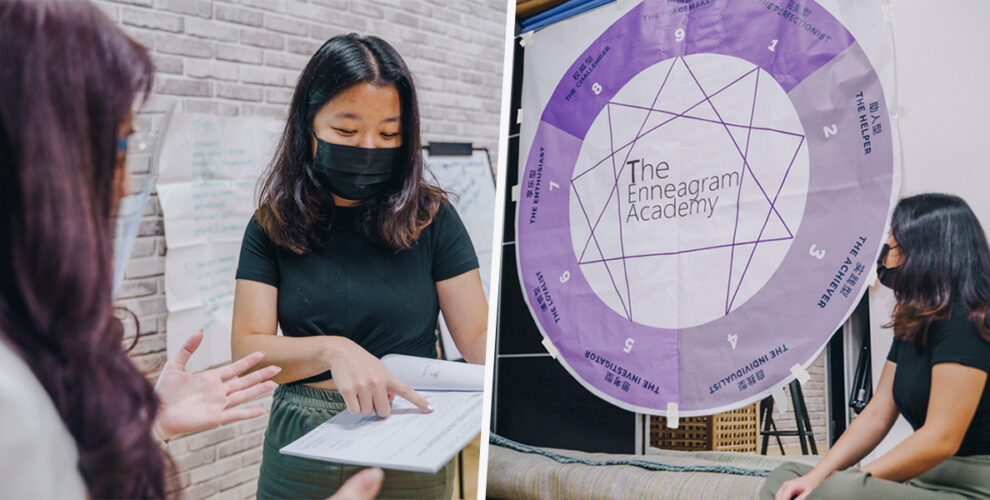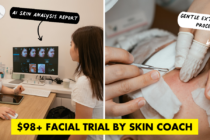The Enneagram Academy
From horoscopes to MBTI and even Harry Potter house sorting, it’s always fun to stumble upon online personality quizzes to see if the results are applicable to us. Despite that, I’ve never thought much of these tests after doing them, since the results mostly focus on what we are like rather than why.
It wasn’t until my colleagues and I were sent to a 2-day course by The Enneagram Academy that I discovered that there were in fact, many real-life uses to personality tests. The Enneagram chart alone is so in-depth that it not only helps us understand ourselves, but also explains how we behave with others in both personal and professional settings.
With no prior knowledge of Enneagram teachings, off I went to discover more about lil’ ol’ me…
Pre-course quiz
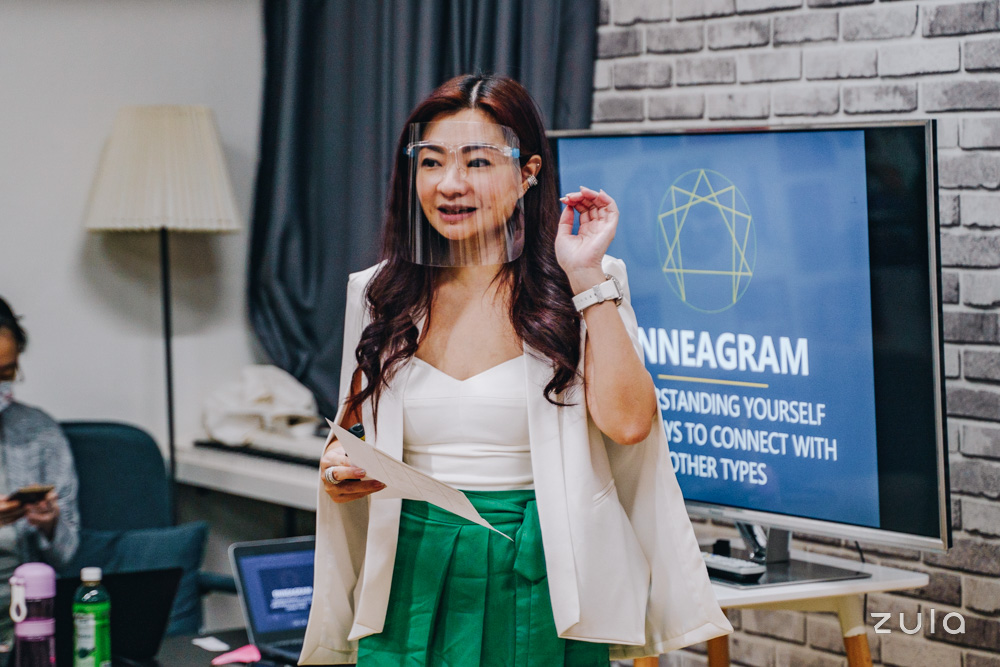
Prior to the workshop, we had to fill in a personality profiling test which consisted of 180 personal questions. Though the number of questions did sound quite sian to me at first, I found that they were actually interesting and easy to comprehend.
The trick was to not overthink each question and go with the first response that came to our minds, so I managed to chiong through the quiz within 30 minutes, all without compromising my honest answers.
Discovering my personality type
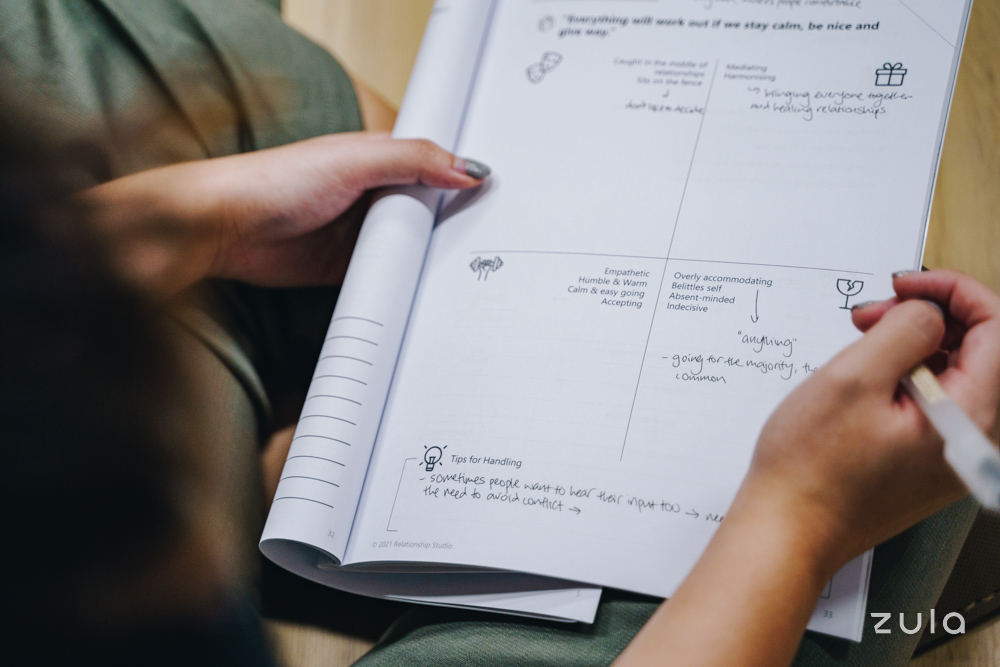
After doing the test, we weren’t informed about the results immediately like most online personality tests would. It felt quite anti-climatic, but also sparked anticipation for what was to come.
A usual workshop takes an entire day, but to factor in our work schedules, ours was split into 2 days. From the get-go, the trainer had us introduce ourselves and share what kinds of people we don’t particularly enjoy working with. Interestingly, and unbeknownst to many of us, this short introduction was already portraying the results of our very own Enneagram types.
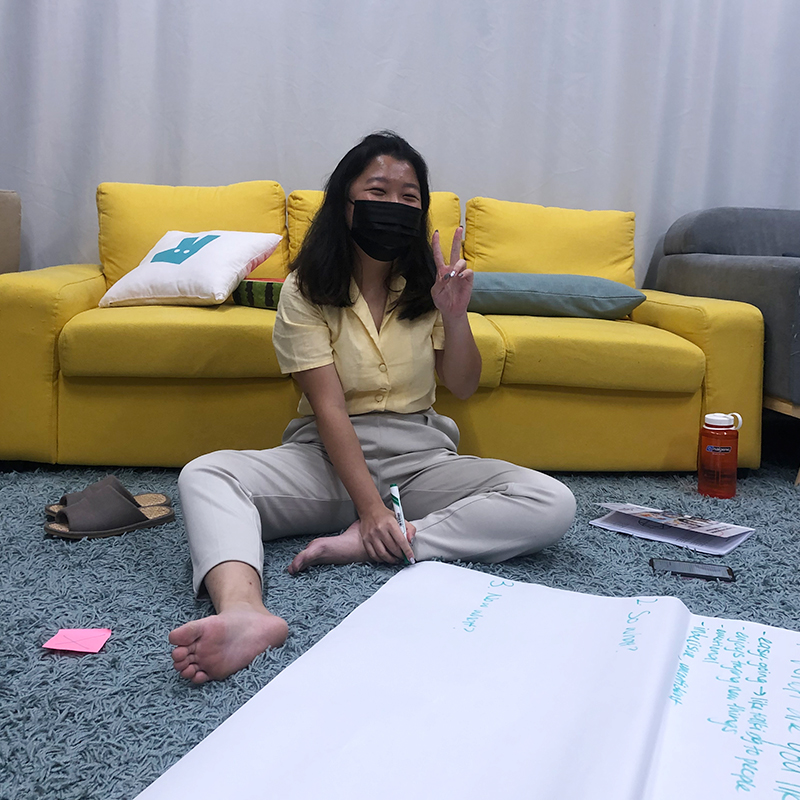 Me brainstorming what my best and worst qualities are
Me brainstorming what my best and worst qualities are
From there, we were split into different groups of Enneagram personality types numbered 1 to 9, so that we could share our views with others of the same type. The result of my test was Type 2, aka The Helper. The shocker? There was no one else in my group. It felt both intimidating yet liberating to have a whole mahjong sheet of paper to write about myself.
We did more hands-on activities of self-reflection by jotting down our strengths and weaknesses. To be frank, I was really struggling at this point. After all, it isn’t easy to judge yourself from an unbiased point of view. Some things I noted down: “outgoing” (strength) and “trouble dealing with my emotions” (weakness). Hey, if anyone were to judge me, I guess I’d rather it be myself.
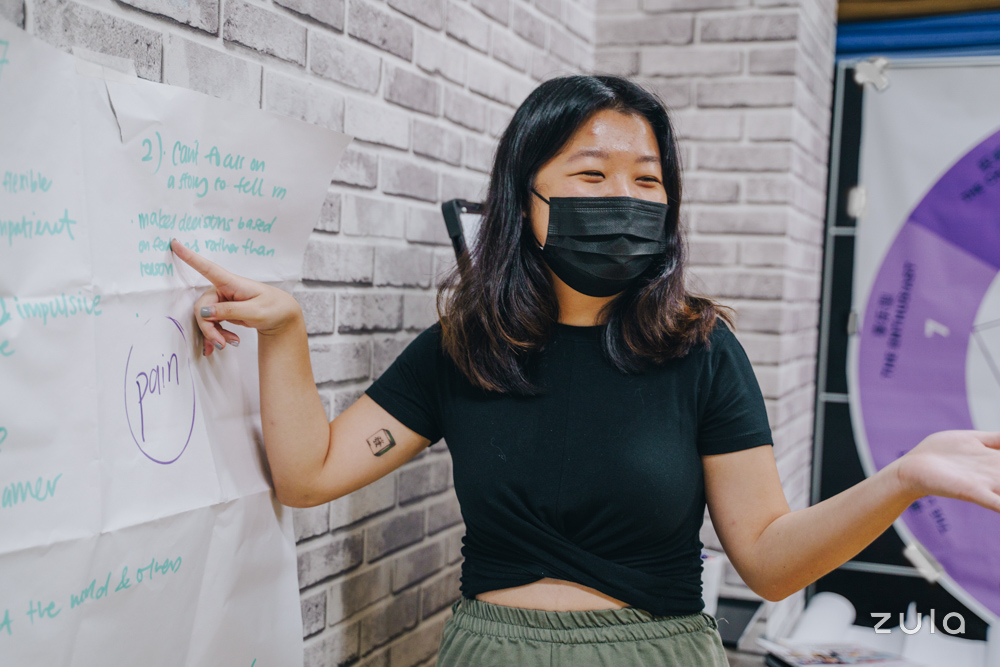
As we had to present what we wrote, there were also many guiding questions and prompts that made speaking up feel more comfortable. I resonated with the world view for Type 2s, which was “I support and empower others. They can’t do without me”. I learnt that this also sometimes comes off as kaypoh to other types — something I’ve embarrassedly heard about myself before.
It was surprisingly pleasant to be able to share my personal experiences and conclude my preferred work habits from there, such as being highly responsive to approval and encouragement.
The 9 different Enneagram personality types
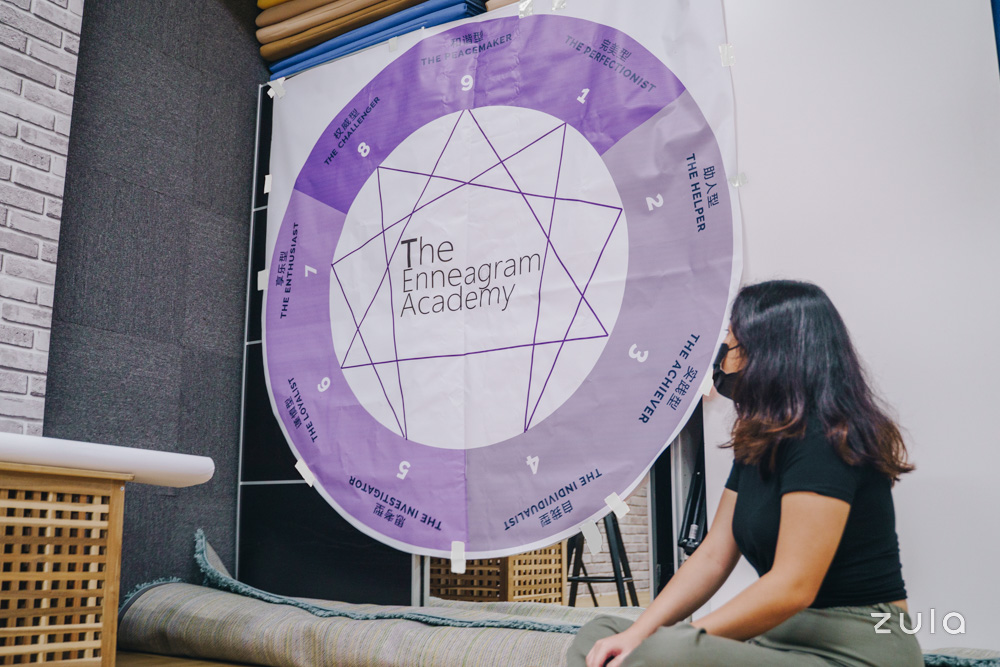
Besides learning about my own Enneagram personality type, I also had the opportunity to learn more about other types through the group presentations. Everyone has their own set of strengths, weaknesses and along the way, suggested steps were shared on how we can better support them. Here’s a brief overview of the 9 types and their respective “worldviews”:
Type 1: Perfectionist — “There’s a right way. Let me teach you.”
Type 2: Helper — “I support and empower others. They can’t do without me.”
Type 3: Achiever — “The world is a contest and I can win if I work hard and appear successful.”
Type 4: Individualist — “My work is authentic — with depth, insight and style, yet… if only things were different.”
Type 5: Investigator — “I am the master of my private world, built by my superior commitment to special knowledge.”
Type 6: Loyalist — “The world is dangerous, truth is hidden, appearances are suspicious. I need trustworthy allies.”
Type 7: Enthusiast — “YOLO! I must explore strange new worlds, go where no one has gone. The world is full of exciting possibilities, experiences and concepts. My mission is to explore them ALL!”
Type 8: Challenger — “I am strong and in charge. I avenge the weak and expose the power abusers, the pretenders and the fools.”
Type 9: Peacemaker — “Everything will work out if we stay calm, be nice and give way.”
We were also taught that we each have a core and it derives from the way we perceive the world. Each of us also have different energy centres.
For myself, I’m heart-centred and tend to make use of my emotions, similarly to Type 3s and 4s. This didn’t come off as a surprise to me, as I’m the kind of person you would find instantly sobbing over cute dog videos. The other 2 groups are head-centred and body-centered, aka using intelligence or sensations respectively.
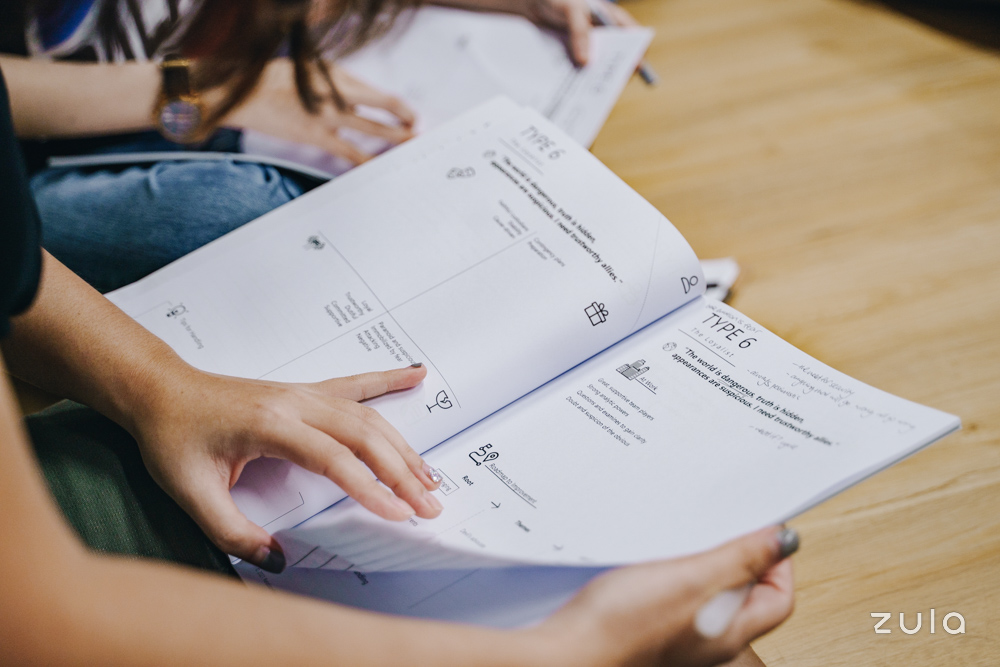
It’s often easy to judge someone without knowing or understanding their true intentions. Through learning about the 9 types and how different we all are as humans, it became clearer to see why people would act in different ways that seem appropriate to them.
Learning about my colleagues’ personality types
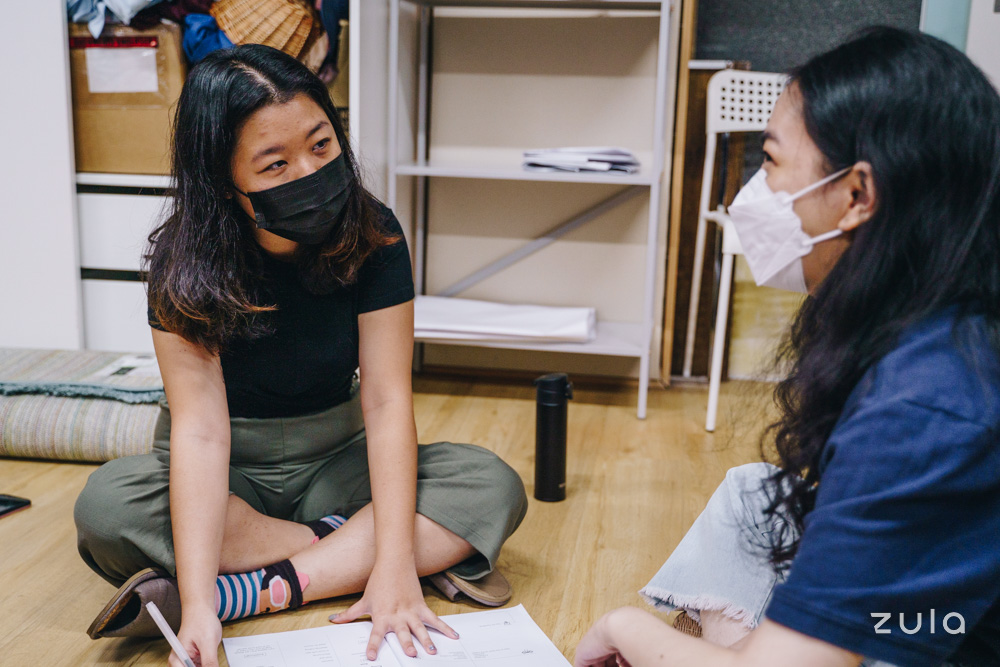
One of my biggest takeaways from the workshop was also learning about my colleagues’ Enneagram personality types and knowing them better. Though we’ve always been working together, I always had this assumption that we were similar, yet everyone in my team had different results.
Through sharing about our experiences and feelings, we discovered many useful tips and tricks about each other’s working styles. Some of our Enneagram types were also connected, meaning that we could even learn positive traits from each other.
For example, my colleague Jou Teng is a Type 4, an emotional individualist who needs to find meaning in work through creative thinking. Fun fact: Type 2s and 4s are connected together on the Enneagram chart.
As someone who is wary of others’ needs, I can learn to help Jou Teng feel recognised and valued through affirmations. In return, she can understand my feelings and encourage me to be aware of my own needs. These small steps may seem quite “duh” at first, but I never thought that they could go a long way in helping us work better together.
Self-reflection
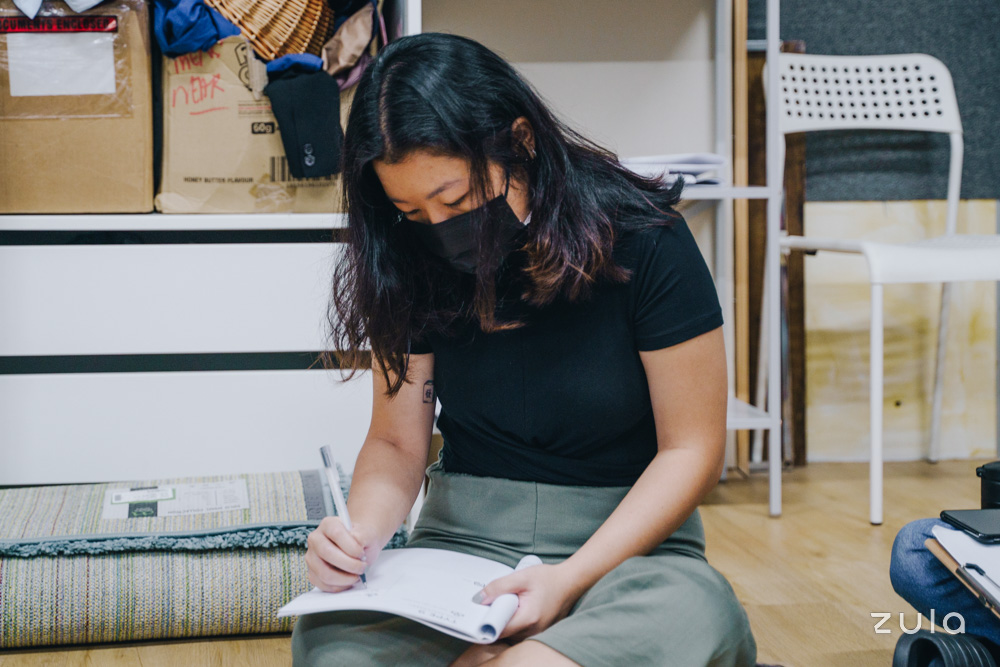
At the end of the workshop, we had a chance to sit in a circle and do a self-reflection of the things we learnt. The sharing session reminded me of secondary school activities and camps, which felt nostalgic since we rarely did this post-graduation.
I really liked how the course was so straightforward and honest with us. Since I felt that the description for Type 2s really hit the nail on its head for me, I was hopeful that the advice I received for my growth will be applicable in future. This includes learning how to focus on my own needs instead of having a saviour mentality to help others first. That doesn’t mean that I should become more selfish, but rather needing more balance and practicing self-care.
Apart from my colleagues, I could also see how my father fit exactly into the Type 8 personality of being The Challenger. Prior to this workshop, I’ve always avoided him and assumed that he was just short-tempered. Who wants to deal with constant anger at home? Definitely not me.
Now I understand that his core type simply cannot process it when Type 2s like myself are too overbearing. Of all things, I never expected to learn more about my own family members even though they weren’t physically there with me. Type 8s are also connected to Type 2s, which means that I could learn to be more assertive like him.
1-on-1 consultation
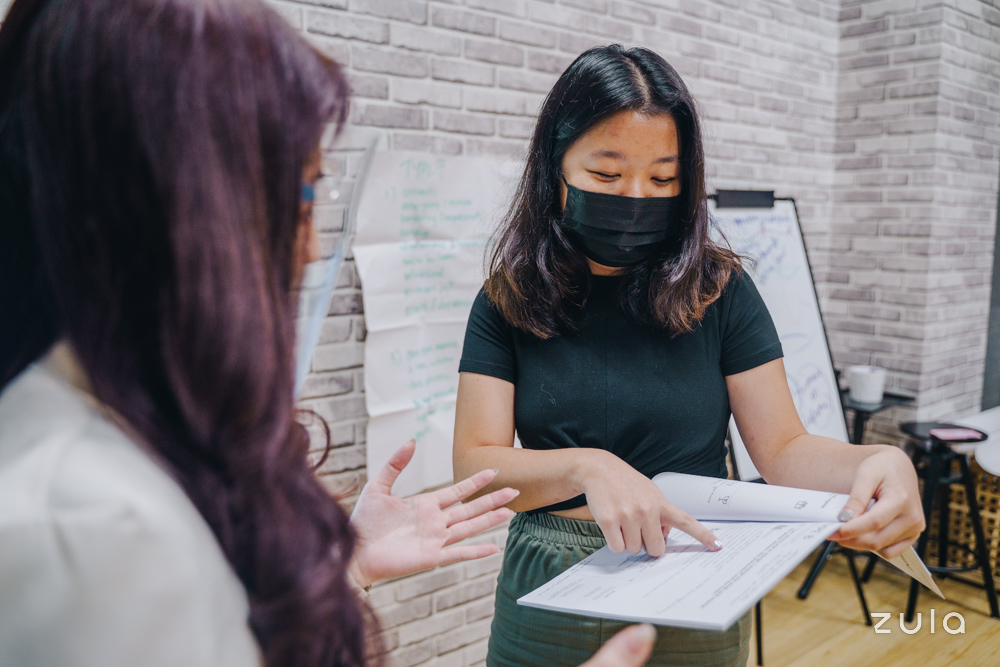
Finally, the time came for all of us to receive our Enneagram quiz results after the course ended. Even though we already knew our core type, we were told that we also had “wings” that support our core personality, indicated by the higher score of one of the types next to our core. My wing is Type 3, the Achiever.
We also demonstrate certain percentages of other types in our life, so I was very curious to open Pandora’s box and find out the exact combination of what makes me, me.
In my Enneagram report, I discovered my core Type 2 was 99.21%, but was also amazed to find out that Types 4 and 7 were also ranked very highly at 98.28% and 78.61% respectively. It explained why I could also strongly relate to my colleagues who shared their experiences as a Type 4 and Type 7 during the session. To sum up, I am a Type 2 Wing 3, with dominant traits of 4 and 7, which explains why I can be creative and love to think out of the box.
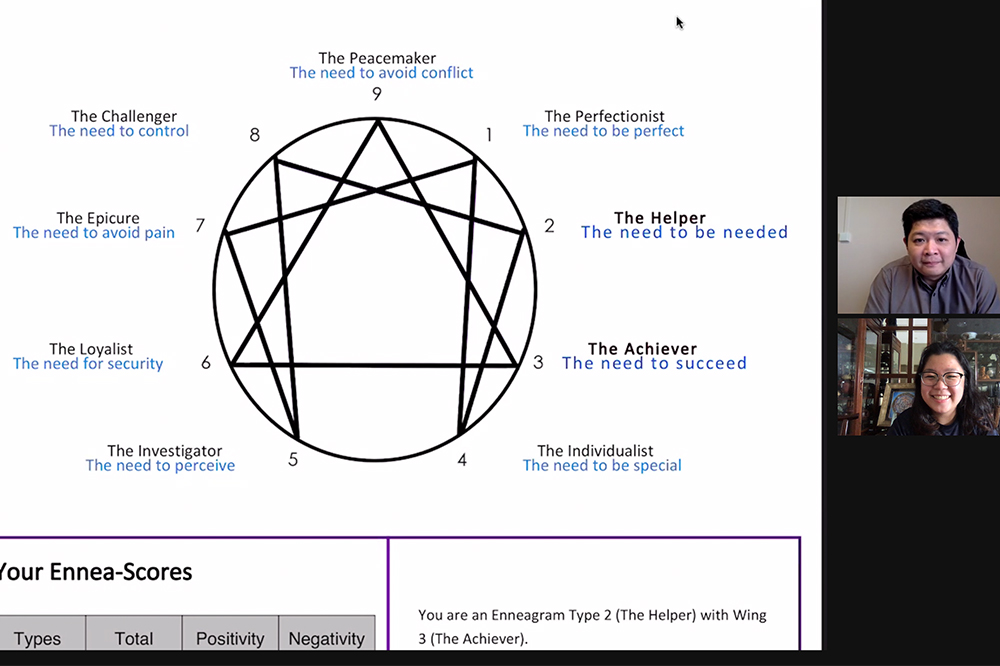 An Enneagram trainer giving me tips on how I can work on myself
An Enneagram trainer giving me tips on how I can work on myself
The 1.5-hour Zoom meeting wasn’t with just any Enneagram trainer, but one who was specialised in my specific core type. I was pumped to find out that my trainer was also a Type 2, since I didn’t get to talk to anyone else in my office who shared the same core type as me.
Finding out your personality type and wing is one thing, but learning and tackling the deep-rooted negative traits that stem from them is a whole different ball game on its own. Through analysing my report, we went through how my nature of prioritising others’ needs first is a decision based on my feelings, which was why my Type 4 was high too.
The trainer then gave me a set of “personal developmental homework” to work on myself for the upcoming month — a phrase that instinctively made me groan. However, he cheered me on by saying that while it might be uncomfortable to do at first, it will help me to reduce the negative traits of being a Type 2 such as feeling “burnt out”. This is so that I can move up my self mastery level, to be a more holistic person in life.
I Attended An Enneagram Workshop & Discovered More About Myself
After attending the Enneagram workshop by The Enneagram Academy, I learnt about the unique motivations of my type and other people’s. The session was insightful with engaging trainers, opening my eyes in a new light to be more empathetic towards others and not be too quick to judge them for who they are.
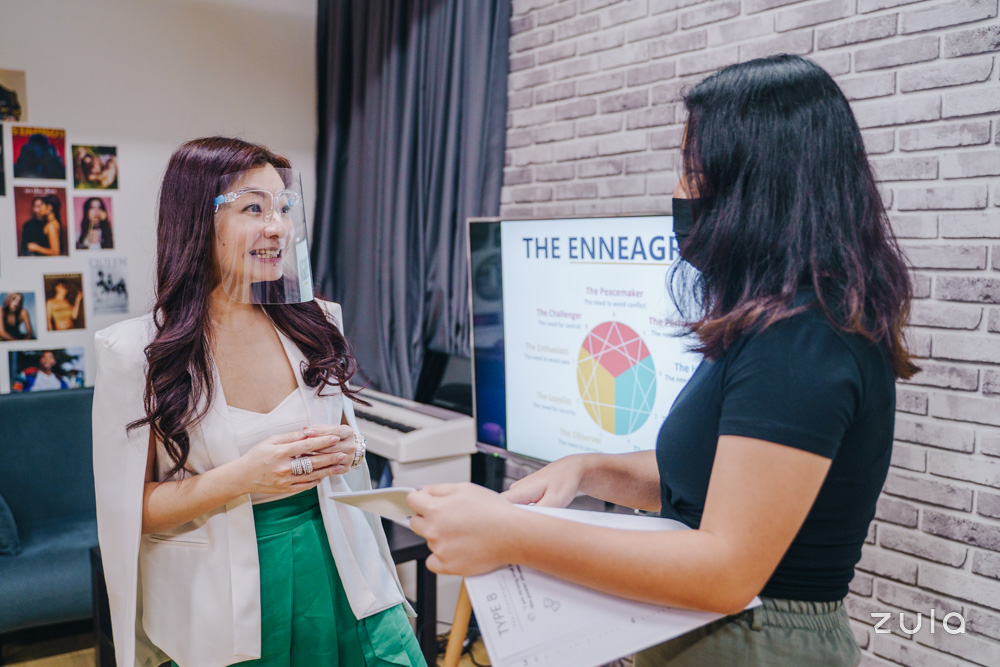
While many people know their own MBTI by heart, I felt that the Enneagram is more than just a personality test with further application to real-life situations. It thoroughly covered our complicated personalities, which are made of different parts from our wings, subtypes and tritypes that can transform our lives. Beyond just the 9 Enneagram personality types, it also helped me to change myself and appreciate people, diversity and transformation even more.
Whether it’s at the office, with our social circle or even in relationships, the Enneagram goes beyond just knowing who you are as a person — it also reveals how you can communicate with other people more efficiently and face challenges in life better.
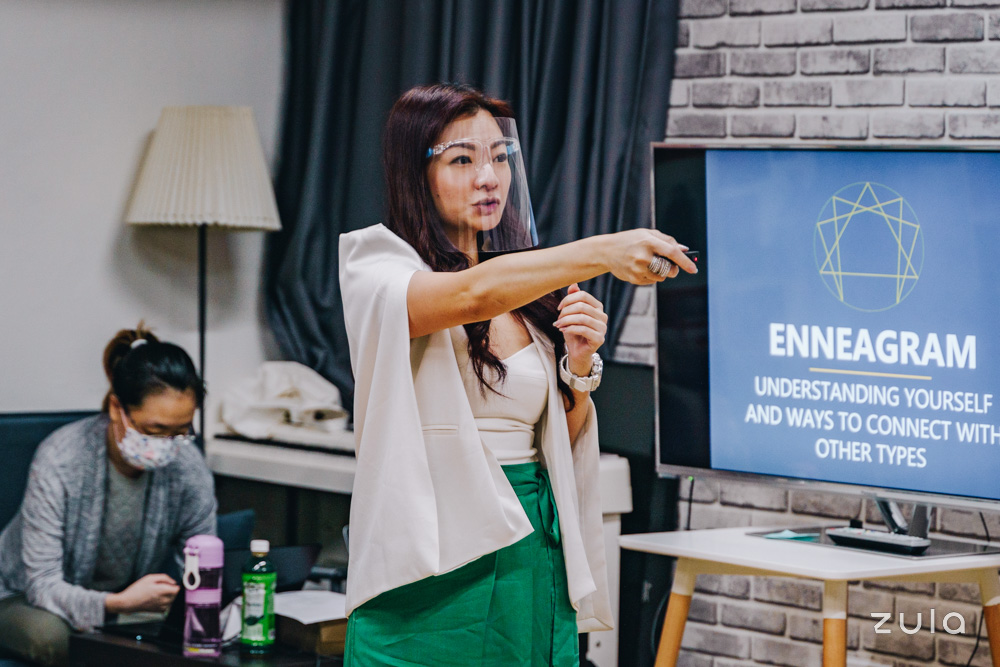
With the Enneagram test being the most in personality profiling now, I’m excited to apply what I’ve learnt to the people around me and become a better version of myself. If you’re looking for new ways to level up yourself and work well with your colleagues, this workshop by The Enneagram Academy will take you on a journey of self-discovery to figure out the answer.
Find Out Your Personality Type With The Enneagram Academy!
This post was brought to you by The Enneagram Academy.
Photography by Tasha Sun.

